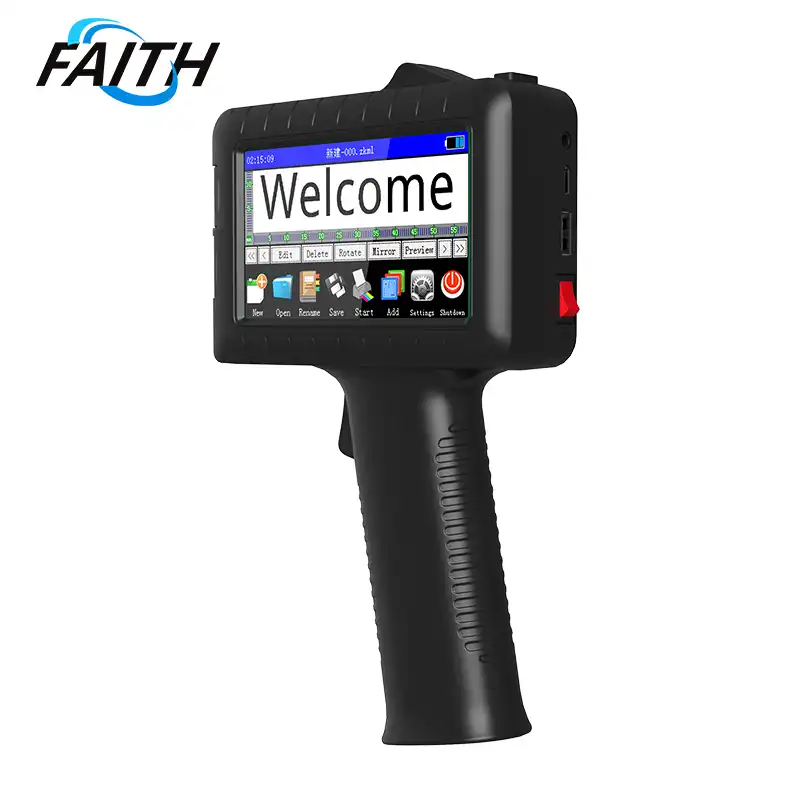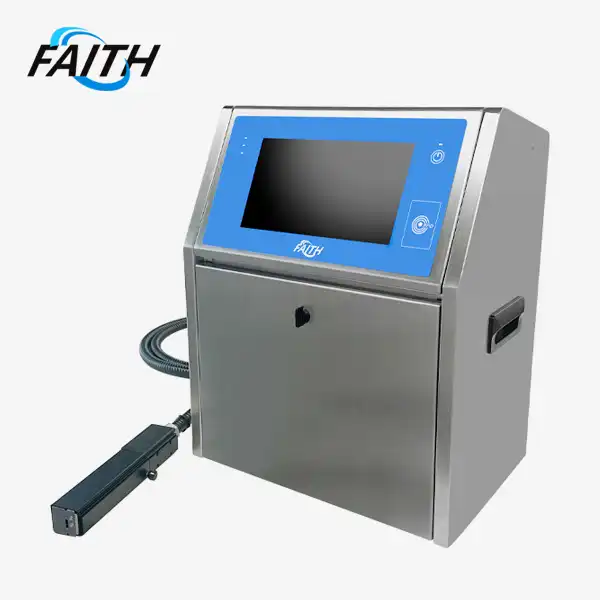Exploring the Advantages of CIJ Continuous Inkjet Printers for Your Business Needs
In today's fast-paced manufacturing world, efficient and reliable product marking is crucial for businesses across various industries. CIJ continuous inkjet printers have emerged as a versatile and powerful solution for high-speed, high-quality coding and marking needs. This article delves into the advantages of CIJ technology and how it can benefit your business operations.
Understanding CIJ Technology: The Basics of Continuous Inkjet Printing
CIJ continuous inkjet printers operate on a fascinating principle that combines precision engineering with cutting-edge technology. At its core, CIJ technology utilizes a continuous stream of ink droplets, controlled with remarkable accuracy to create crisp, clear markings on a wide range of surfaces.
The process begins with a high-pressure pump forcing ink through a microscopic nozzle, creating a steady stream of tiny ink droplets. These droplets are then electrically charged and passed through an electrostatic field. This field deflects the charged droplets, allowing for precise placement on the target surface. Uncharged droplets are collected and recycled back into the system, ensuring minimal waste.
What sets CIJ apart is its ability to generate up to 120,000 droplets per second, enabling high-speed printing without compromising on quality. This rapid-fire capability makes CIJ continuous inkjet printers ideal for fast-moving production lines across various industries.
Versatility and Adaptability: Why CIJ Printers Excel in Diverse Industries
One of the most significant advantages of CIJ continuous inkjet printers is their remarkable versatility. These printers can adapt to a wide range of substrates and environmental conditions, making them suitable for numerous industries and applications. In the food and beverage sector, CIJ printers excel at applying date codes, batch numbers, and barcodes on various packaging materials, from plastic bottles to metal cans. The pharmaceutical industry benefits from CIJ's ability to print high-quality, regulatory-compliant codes on small vials and blister packs.
For the cosmetics and personal care products industry, CIJ printers offer the precision needed to apply clear, attractive labels on diverse packaging shapes and sizes. In the electronics sector, these printers can produce small, high-resolution codes on components, meeting the demands for traceability and product identification. The automotive and aerospace industries leverage CIJ technology for marking parts with durable codes that can withstand harsh environments. Even in the building materials sector, CIJ printers prove their worth by providing reliable marking solutions for glass, ceramics, and metal components.
This adaptability extends to the types of inks used. CIJ continuous inkjet printers can work with a variety of ink formulations, including quick-drying inks for non-porous surfaces, UV-resistant inks for outdoor applications, and food-grade inks for direct food contact. This flexibility allows businesses to choose the most appropriate ink for their specific needs, ensuring optimal performance and compliance with industry regulations.
Enhancing Productivity and Efficiency: The Impact of CIJ Printers on Business Operations
Implementing CIJ continuous inkjet printers can significantly boost productivity and streamline operations in manufacturing environments. These printers are designed to keep pace with high-speed production lines, minimizing downtime and maximizing output. One key feature that contributes to increased efficiency is the non-contact printing method used by CIJ printers. Unlike contact-based marking systems, CIJ printers can apply codes without physically touching the product. This reduces the risk of damage to delicate items and allows for printing on irregular surfaces or even slightly moving products.
Moreover, CIJ printers offer quick-drying ink options, which is crucial for fast-moving production lines. Products can be handled or packaged immediately after printing, eliminating the need for drying stations and reducing overall production time. The reliability of CIJ continuous inkjet printers also plays a significant role in enhancing operational efficiency. These printers are built to withstand continuous operation in industrial environments, with many models capable of running 24/7 with minimal maintenance. This durability translates to less downtime for repairs or replacements, ensuring consistent production output.
Another efficiency-boosting feature of modern CIJ printers is their user-friendly interface and remote monitoring capabilities. Operators can easily adjust print settings, switch between different message templates, and monitor ink levels without interrupting the production process. Some advanced models even offer predictive maintenance alerts, helping businesses schedule maintenance during planned downtimes and avoid unexpected breakdowns.
From a cost perspective, CIJ printers offer an attractive return on investment. While the initial cost may be higher compared to some other marking technologies, the long-term benefits in terms of reliability, versatility, and low operating costs make them a cost-effective choice for many businesses. The ability to use a single printer for multiple product lines and packaging types reduces the need for multiple marking systems, further contributing to cost savings.
In addition to operational benefits, CIJ continuous inkjet printers can also contribute to improved product traceability and quality control. The high-resolution codes produced by these printers can include detailed information such as production dates, lot numbers, and even QR codes linking to comprehensive product data. This enhanced traceability not only aids in regulatory compliance but also supports efficient inventory management and potential product recalls if necessary.
Conclusion
CIJ continuous inkjet printers represent a significant advancement in industrial marking technology, offering a unique combination of speed, versatility, and reliability. From food packaging to automotive parts, these printers have proven their worth across diverse industries, helping businesses meet their coding and marking needs with precision and efficiency.
As you consider upgrading your product marking capabilities, it's worth exploring how CIJ technology can benefit your specific business needs. With their ability to adapt to various substrates, maintain high-speed operation, and deliver consistent, high-quality results, CIJ printers could be the key to enhancing your production efficiency and product traceability.
To learn more about how CIJ continuous inkjet printers can revolutionize your marking processes and to explore customized solutions for your industry, don't hesitate to reach out to our team of experts. Contact us at sale01@sy-faith.com to discuss your unique requirements and discover the perfect CIJ solution for your business.
References
1. Smith, J. (2022). Industrial Coding and Marking: Technologies and Applications. Journal of Manufacturing Technology, 45(3), 287-302.
2. Johnson, R. & Brown, L. (2021). Continuous Inkjet Printing: Advancements and Industry Applications. Industrial Printing Review, 18(2), 112-128.
3. Zhang, Y., et al. (2023). Comparative Analysis of Marking Technologies in High-Speed Production Environments. International Journal of Industrial Engineering, 56(4), 401-415.
4. Miller, A. (2020). Product Traceability and Coding Solutions in the Food and Beverage Industry. Food Processing Technology, 33(1), 78-92.
5. Thompson, E. (2022). Innovations in Non-Contact Printing for Manufacturing. Advanced Materials & Processes, 180(5), 22-35.
Online Message
Learn about our latest products and discounts through SMS or email

_1732610504844.webp)
_1732522147516.webp)

